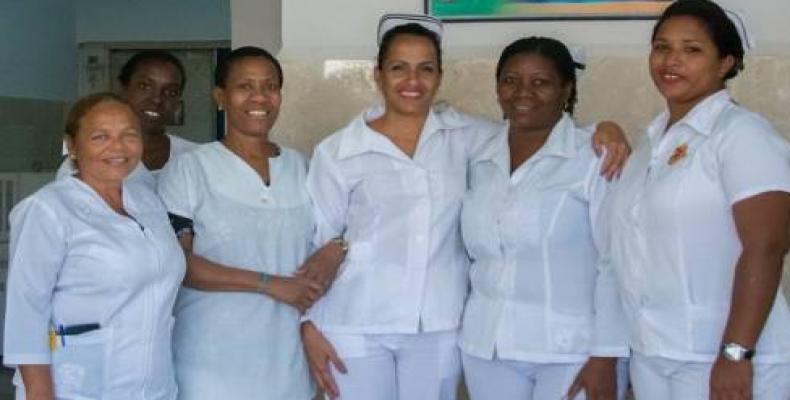The COVID-19 pandemic has poignantly highlighted the critical role that nurses and other health workers play in protecting people’s health and saving lives. A new report, The State of the World’s Nursing 2020, calls for greater investments in nurses’ education, working conditions, and leadership to strengthen their contributions to health systems.
“Every day, we are seeing the courage, skill, and dedication of nurses and other healthcare workers as they serve bravely on the front lines of the COVID-19 pandemic,” said Carissa F. Etienne, Director of the Pan American Health Organization (PAHO). “Nurses have always been at the forefront of saving lives and caring for the people. But never before has their worth been clearer than it is now. They deserve not only our gratitude, but also tangible support to ensure they are able to contribute to the fullest of their abilities.”
The new report, released by the World Health Organization (WHO) in partnership with the International Council of Nurses (ICN) and Nursing Now on the occasion of World Health Day 2020, highlights the contributions of and challenges facing the world’s nearly 28 million nurses, who account for more than half of all health workers globally. The report’s call to action is clear: governments need to invest heavily in nursing education, creating nursing jobs and promoting nursing leadership to ensure sufficient nurses with the right skills for effective, equitable and sustainable health systems.
Nursing in the Americas
The Region of the Americas is home to 30% of the world’s nurses, or some 8.4 million people, of whom 87% are female. On average, the Region has 83.4 nurses per 10,000 population, more than twice the global average of 36.9 per 10,000. The figure, however, masks extreme disparities in the availability of nurses in different countries. Fully 87% of all nurses in the Americas are concentrated in just three countries: Brazil, Canada, and the United States, which account for 57% of the Region’s total population. That translates into a density of 80 nurses per 10,000 population in those three countries but contrasts starkly with the less than 10 nurses per 10,000 population in Haiti, Bolivia, and the Dominican Republic.
The Americas Region also has major disparities in the distribution of nurses within countries. In the 35 PAHO Member States that have reported data on distribution, only 36% of nurses are located in rural areas, even though 50% of the population resides there.
The availability of nursing personnel is also complicated by the fact that a number of countries, especially in the Caribbean, are net exporters of nurses.
Bridging the nursing gap
In the Americas, some 30% of the nursing workforce is aged 55 or older, with nearly a quarter of nurses expected to retire over the next 10 years. While there are currently 1.2 young nurses available to replace each retiree, that replacement rate will be insufficient to keep pace with population growth.
At the global level, the report predicts that the current shortage of some 5.9 million nurses will increase, as 1 in 6 nurses worldwide is projected to retire within the next 10 years.
To bridge the nursing gap by 2030, the report says countries will need to increase the number of nursing graduates by an average of 8% every year and ensure they can find jobs and be retained by health systems. This will require investments to expand educational and training opportunities, increase nurses’ remuneration and improve their working conditions to ensure better retention. Funding these measures would cost roughly US$10 per capita (overall population) per year, the report says.
The report also recommends other areas of action to strengthen the nursing workforce, including developing leadership skills in nurses and creating new roles with opportunities to exercise those skills within health systems. Gender-sensitive policies are also critical for retention, given that 9 out of 10 nurses globally are female. For example, offering more flexible working hours would help accommodate the changing needs of women nurses during their careers.
“We know that transformational change is needed if we are to bridge the nursing gap and empower nurses to fully realize their potential within our health systems,” said James Fitzgerald, director of Health Services and Systems at PAHO. “This report explains not only what we need to do, but why we must do it now, to help accelerate progress toward universal health.”
Source: www.paho.org


